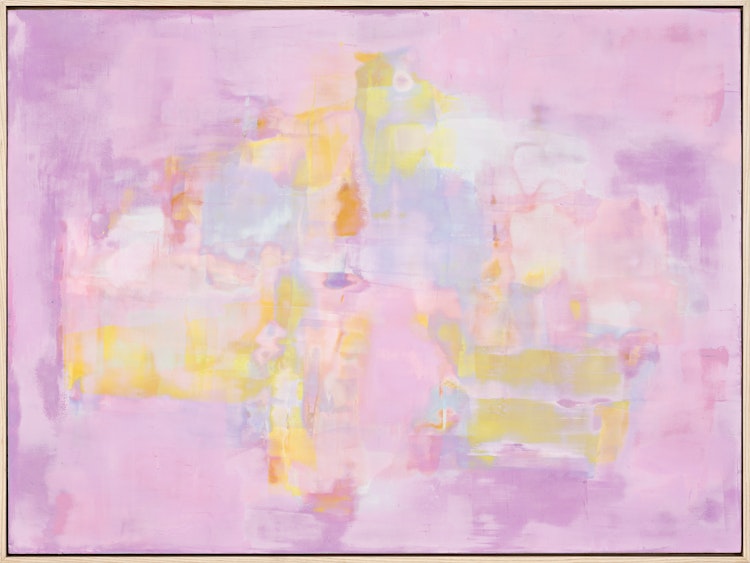Illuminations


For nearly two decades, Josefine Lyche has in her artistic universe persistently been dedicated to a range of delicate topics within, what has often been sloppily labeled as, spirituality or esoteric mysticism. In doing so, she has managed to balance the fine line between the extravagance of indulging engagement and distanced analysis, pairing them with a distinct twist of playfulness. For the exhibition entitled Illuminations, Lyche presents a series of new paintings and a series of sculptures grouped by the title Sketches for a Monument.
When reconnecting after a long hiatus to the technique of layers and layers of sand filler and colour pigments, the development and refinement becomes underlined in these new paintings. Although the smooth patterns and the combination of geometric and organic formations are recognisable characteristics of hers, the decision to leave parts of the panels partly untreated emphasizes the motif and leaves room for alternate approaches. Consequently, the abstractions turn into veritable Rorschach tests, and the motif seems to come to life and elevate from the panel into the room, almost floating and moving about. The pastel palette creates illusions of light reflections, and the reference in some of the titles to Invisible Cities, the famous novel by Italo Calvino, invokes the appearance of undefined mirages.
The shape of crystals and diamonds that we see in some of the paintings have the ability to spread the light of different colours (optical dispersion). Within certain esoteric and spiritual beliefs, diamonds also hold special qualities such as aiding enlightenment or bringing clarity to the mind. Lyche is deeply occupied with geometrical shapes, tokens and symbols that communicate the structures of beauty and mysticism within nature, humans or the cosmos - something that is also fully embedded in her sculptural studies for a monument.
The sculptures are freely inspired by the geometric forms within Eurythmy (a.k.a. visible speech), and the choreographic alphabet named “Soul gestures” originating from Rudolf Steiner. The general idea behind Eurythmy is that motion can represent the mood of the soul and put the structure of a language of emotions into bodily movement (soul gestures). Although this is a starting point, another more playful reference that is probably easier to recognize is that of artist Franz West. The bulky, colourful, and organic sculptural bodies help to trigger the homo ludens, the playful human, that we all keep inside. Just imagine encountering one of Lyche’s sculptures as a full-blown, large scale, and over-sized manifestation in a cityscape or a park? The thought most certainly brings joy to mind.
One of the most used parables about the art world is that it functions as a religion. The gallery or the museum is likened to the church, the social network within constitutes the congregation and the artworks are the holy objects that can convey or represent spirituality. It is easy to see why. Just walk into any museum and you will find individuals gazing at works of art for hours in silence and awe. It is not far-fetched to think of Lyche’s paintings and sculptures, just like diamonds, as illuminating mental charging stations for those who allow it.
What comes to mind when writing these words, is the difficulty in formulating or translating what Lyche, with such ease, manages to embody within her artworks. Or in the words of Walter Benjamin who, in a passage of his book incidentally also entitled Illuminations, writes:
Art postulates man's physical and spiritual existence, but in none of its works is it concerned with his response. No poem is intended for the reader, no picture for the beholder, no symphony for the listener. Is a translation meant for readers who do not understand the original?
What Benjamin means is that regardless of what an artist has in mind for the receiver, words always come short when it comes to “translating” art. As we stumble around in life and the universe, we need to use our senses as best we can to navigate and achieve a variety of experiences. Art constitutes one of those alternate languages that we use to interpret and explore the world, and this just happens to be the mother-tongue of Lyche.
Text by Power Ekroth










Hva leter du etter?